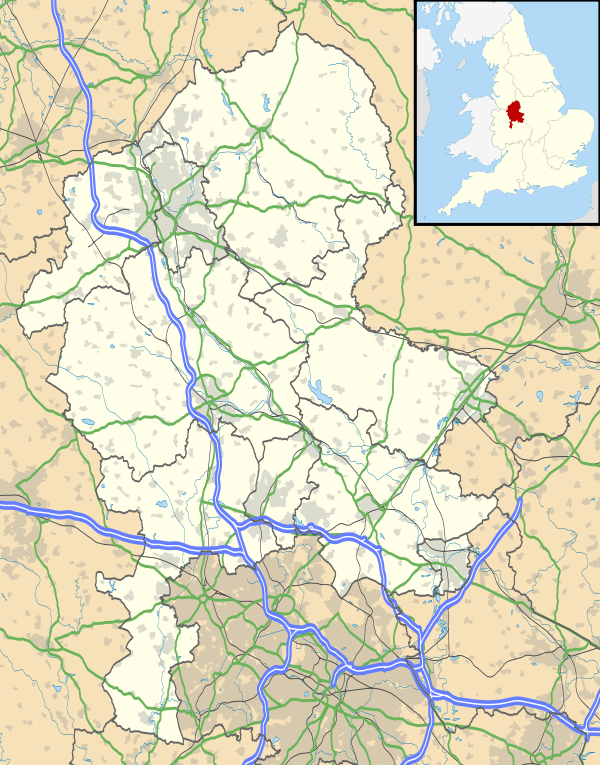Newchapel
| Newchapel | |
| St James' Church, Newchapel |
|
 Newchapel |
|
| OS grid reference | SJ863546 |
|---|---|
| District | Newcastle-under-Lyme |
| Shire county | Staffordshire |
| Region | West Midlands |
| Country | England |
| Sovereign state | United Kingdom |
| Post town | STOKE-ON-TRENT |
| Postcode district | ST7 |
| Dialling code | 01782 |
| Police | Staffordshire |
| Fire | Staffordshire |
| Ambulance | West Midlands |
| EU Parliament | West Midlands |
| UK Parliament | Staffordshire Moorlands |
|
|
Coordinates: 53°05′19″N 2°12′21″W / 53.0885°N 2.2058°W
Newchapel is a hamlet in the Borough of Newcastle-under-Lyme, close to Kidsgrove in Staffordshire, England.
Newchapel was originally named Thursfield. It was mentioned in the Domesday Book in 1086 as Turvoldesfeld. After the Reformation in the 17th century the land reverted to private ownership, the new owner built a stone Chapel and the village was renamed Newchapel.
From 1894 to 1904 Newchapel formed part of Wolstanton Rural District. After re-organisation of boundaries, from 1904 to 1974 it was part of Kidsgrove Urban District; following the Local Government Act 1972, it was absorbed into the Borough of Newcastle-under-Lyme.
Newchapel was served by a railway station (shared with Goldenhill), Newchapel and Goldenhill on the Potteries Loop, which was opened by the North Staffordshire Railway on 1 October 1874 and closed on 2 March 1964.
The canal engineer James Brindley (1716 – 27 September 1772) died at his Turnhurst estate in Newchapel, within sight of his unfinished Harecastle Tunnel. On 30 September 1772, just nine days after the completion of his Birmingham Canal, he was buried in the churchyard of Newchapel; the present church, St. James, is dedicated to his memory. The grave is marked by a bronze plaque.[1]
During the excavation work for the first Harecastle Tunnel, large amounts of coal were discovered underground. This led to the development, initially by the Duke of Bridgewater and then by Robert Heath and Sons of a significant mining and coal by-products works known as Birchenwood.[2] Growing from the Birchenwood Colliery Company founded in 1893, this was the largest industrial site that the Newchapel area has ever known and provided employment for several thousand people in its heyday. Newchapel as seen today was born as a result of the success of Birchenwood, and the first houses built were to provide homes for the workers and their families.[3]
Notable People from Newchapel
- Hugh Henshall (1734–1816), civil engineer noted for his work on canals
References
- ↑ "St James Church, Newchapel - History Page". Churchonhill.org.uk. 1957-09-06. Retrieved 2011-12-01.
- ↑ "harriseahead.com". harriseahead.com. Retrieved 2011-12-01.
- ↑ "birchenwoodhistory". Btinternet.com. 1913-04-23. Archived from the original on 2012-06-30. Retrieved 2011-12-01.
External links
| Wikimedia Commons has media related to Newchapel, Staffordshire. |
- "Newchapel Village". Archived from the original on 2012-11-29. Newchapel Village History and photo gallery
- http://archive.is/bRHi. Archived from the original on 2012-11-29. Missing or empty
|title=(help) A brief History of Harriseahead and Newchapel - Thursfield History History of Newchapel and the Thursfield family 1500-2000.